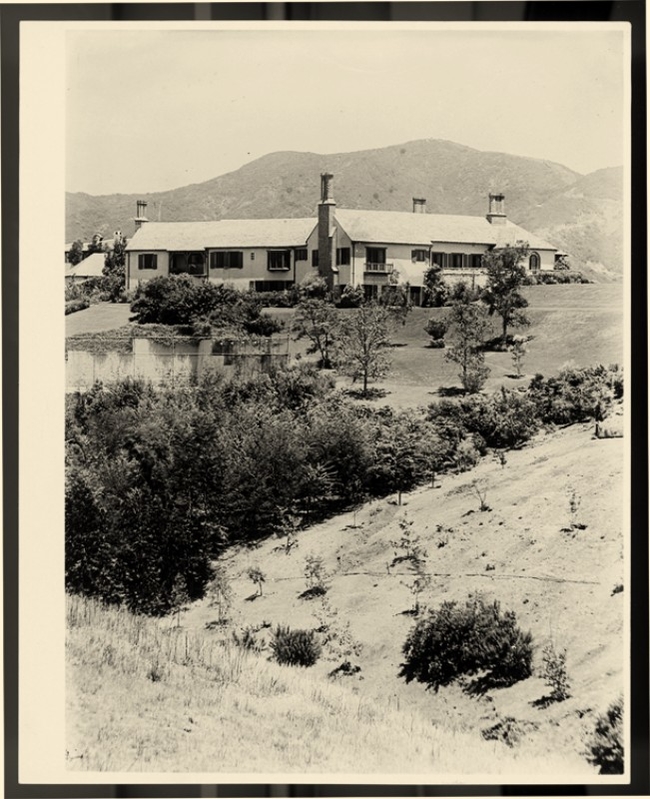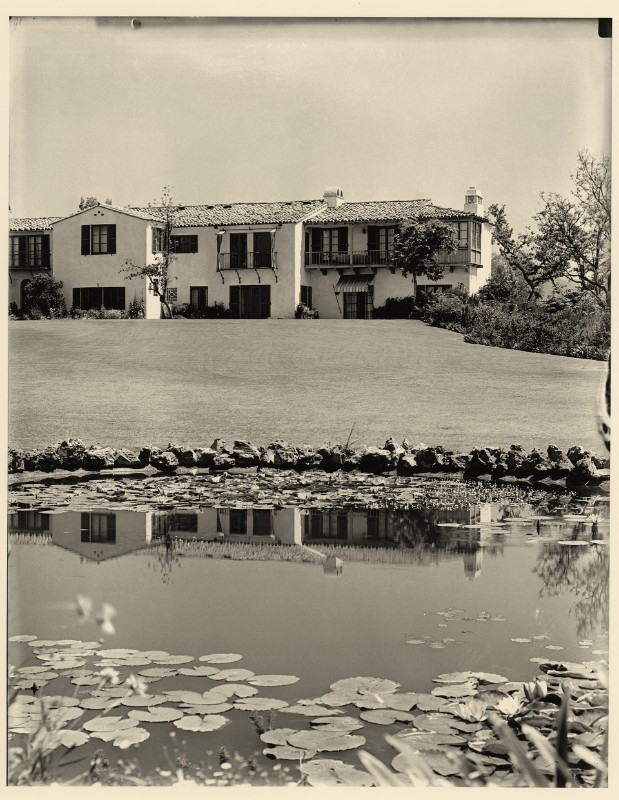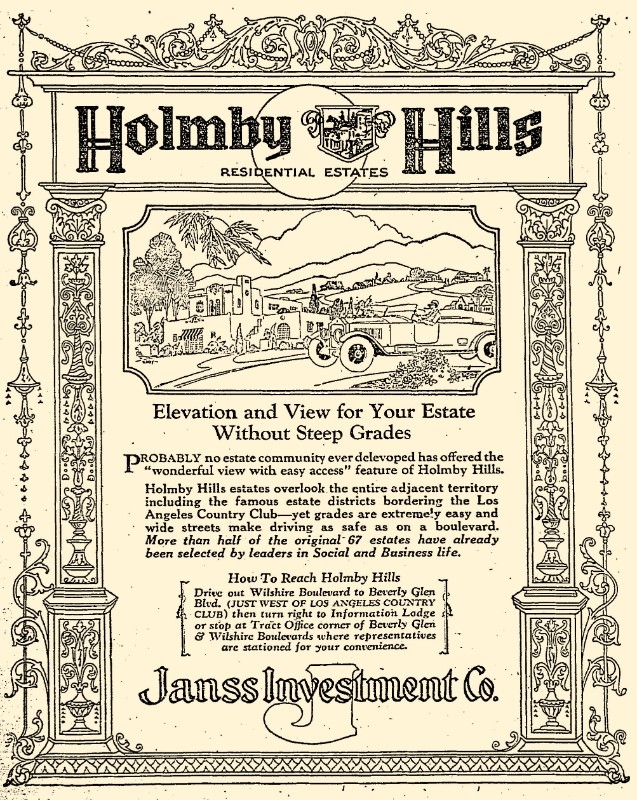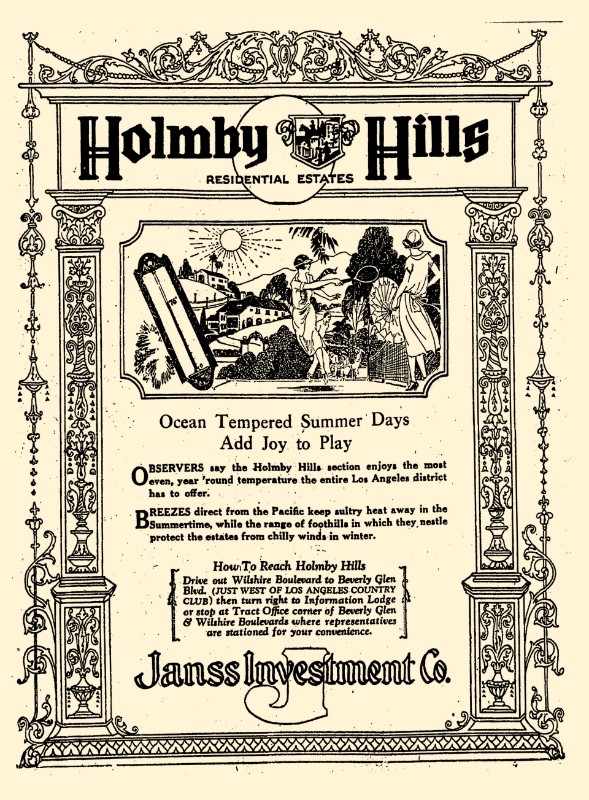Southern California is known for its affluent neighborhoods, especially the area around Los Angeles where you can find the Platinum Triangle. At the apex of the triangle is Holmby Hills, formed in 1925 between the more well-known neighborhoods of Beverly Hills and Bel-Air. Residents love Holmby Hills because of its more private and secluded locations that provide quieter streets and easier living. The formation of Holmby Hills (which didn’t actually get its name until much later) began as an ambitious dream of the Los Angeles and Santa Monica Land and Water Company. The company purchased the land from John Wolfskill in 1887, paying over $400,000 for 4,438 acres.
Their plans were derailed from the start. The company had not planned ahead for providing essentials such as water, electricity and natural gas to the residents, nor did they have a solution for flooding, which was frequent during the rainy season. They believed that the increase of travelers to the area would ensure that their project succeeded, despite their poor planning. Unfortunately, they could not see into the future, and in 1888, the real estate market crashed.
The land company eventually had to sell the land and it was purchased by its former owner, John Wolfskill, who used the land to grow lima beans and barley. His ranch was largely undeveloped, making it the most desirable property in the area at the time. After Wolfskill died in 1913, his family made one of the biggest real estate deals for that era, selling the ranch for two million dollars in cash. In 1922, the land was sold once again to the Janss Investment Company, who began selling plots of land to working-class citizens and to commercial clients, such as restaurants and retail stores, in order to build up the neighborhood, which is now known as Little Holmby.
In 1925, the Janss Investment Company began selling estate lots on their property. The lots had plenty of flat land for homes and gardens, plus large ravines in the back for water runoff to prevent flooding. The Janss company wanted to maintain the beauty and extravagance of the land so purchases came with restrictions and conditions. Homes had to be worth more than $25,000, land was sold in one-to-four acre plots and the original plots of land could not be divided for fifty years after purchase. Telephone and electrical lines had to be buried underground to preserve the natural beauty.
Although the sale of real estate slowed down during the Great Depression and World War II, Holmby Hills was able to build up the community and sell out of most of the land plots. After World War II, Holmby Hills remained untouched by the new construction that was taking over Beverly Hills and Bel-Air. The residents were able to maintain the natural presence of their neighborhood, something they still enjoy today. Holmby Hills is a fantastic representation of what make Southern California one of the top places to live in the United States.





